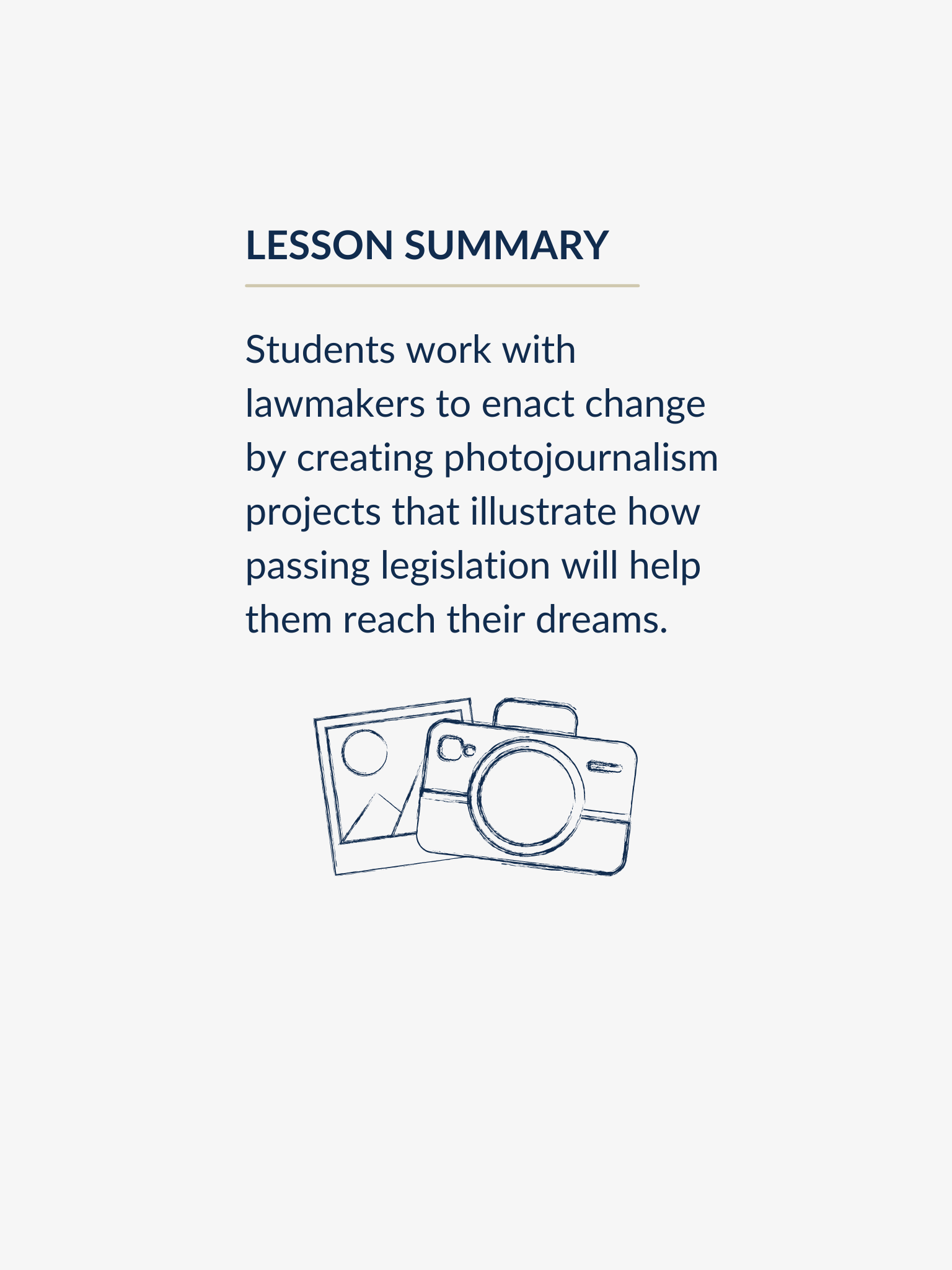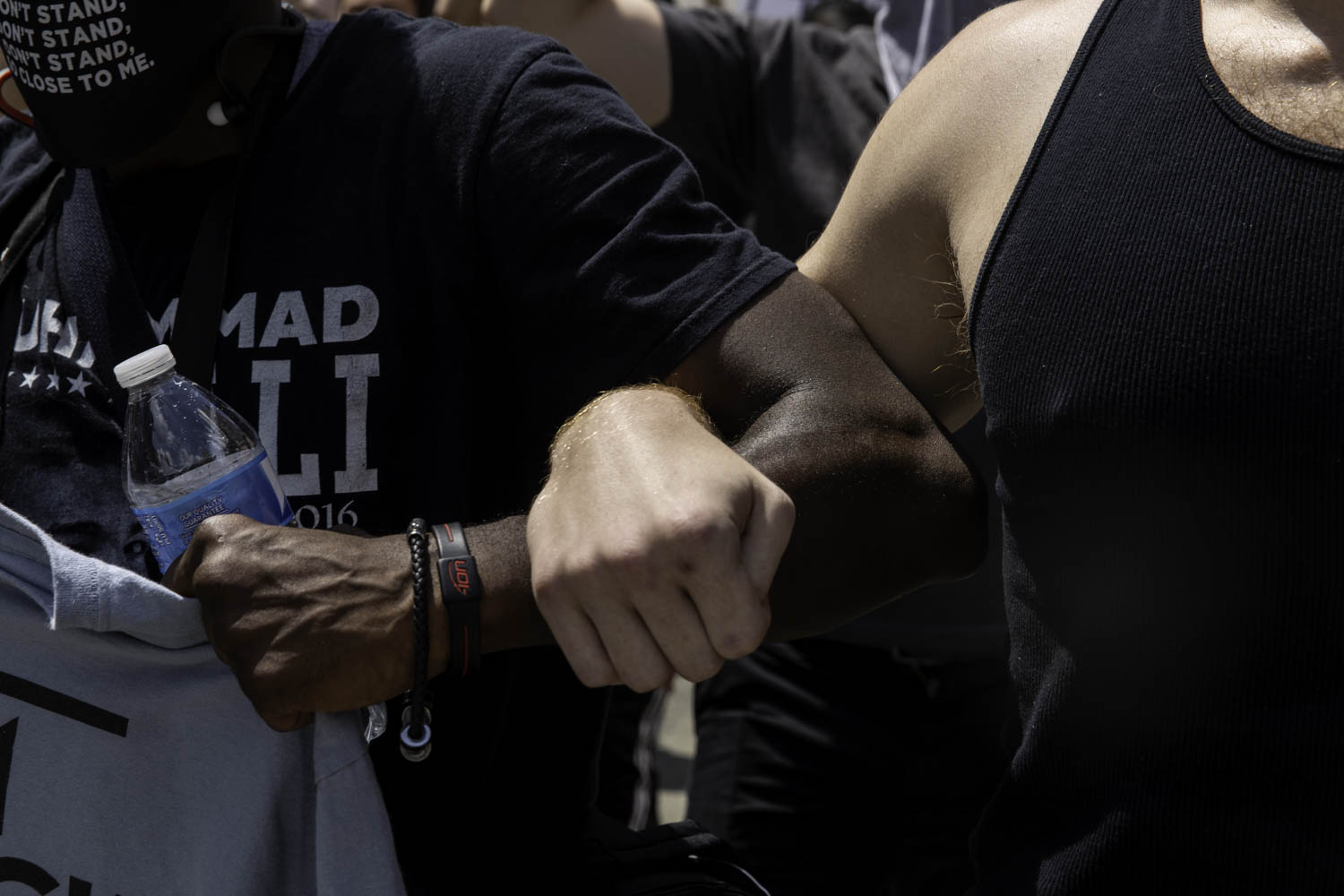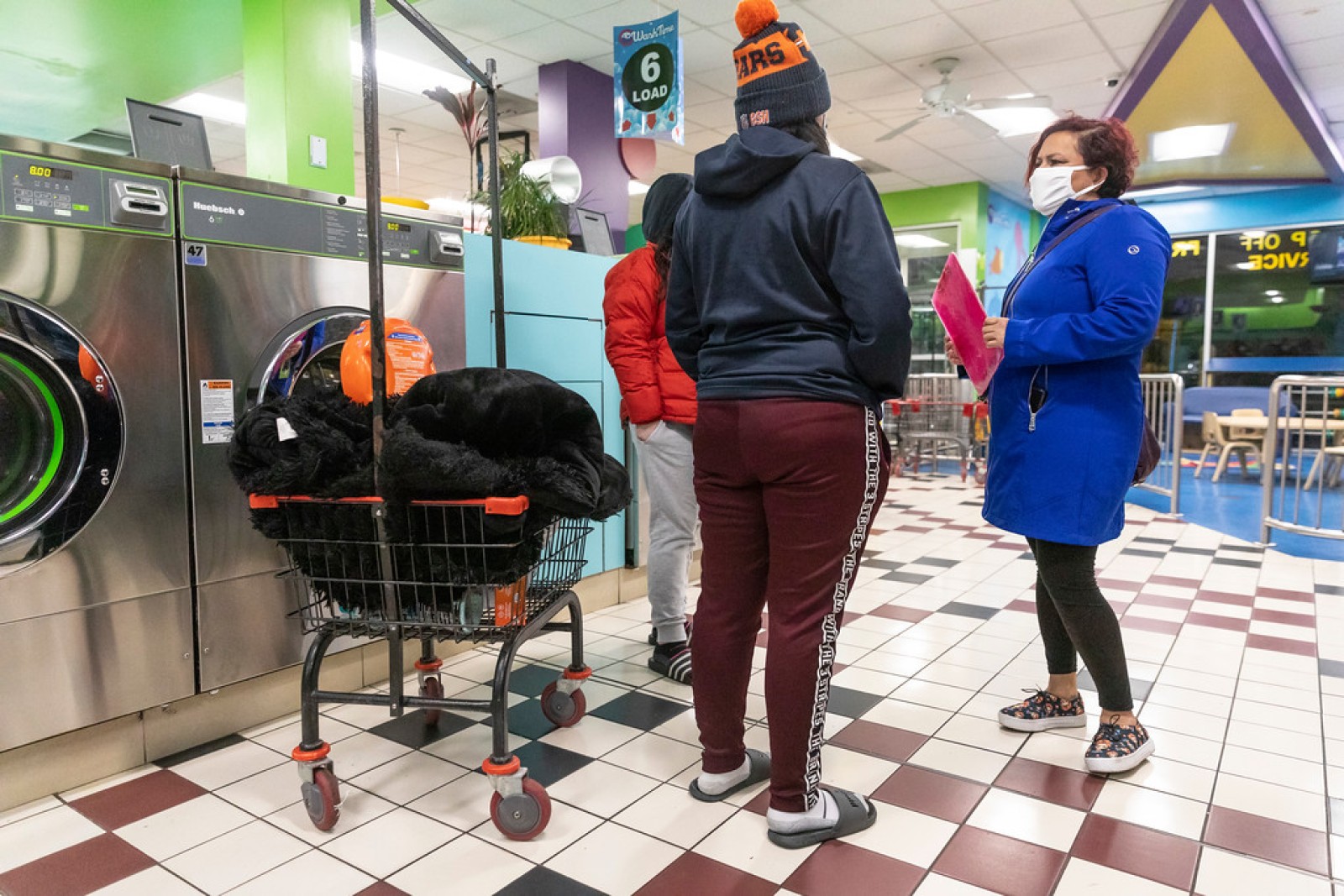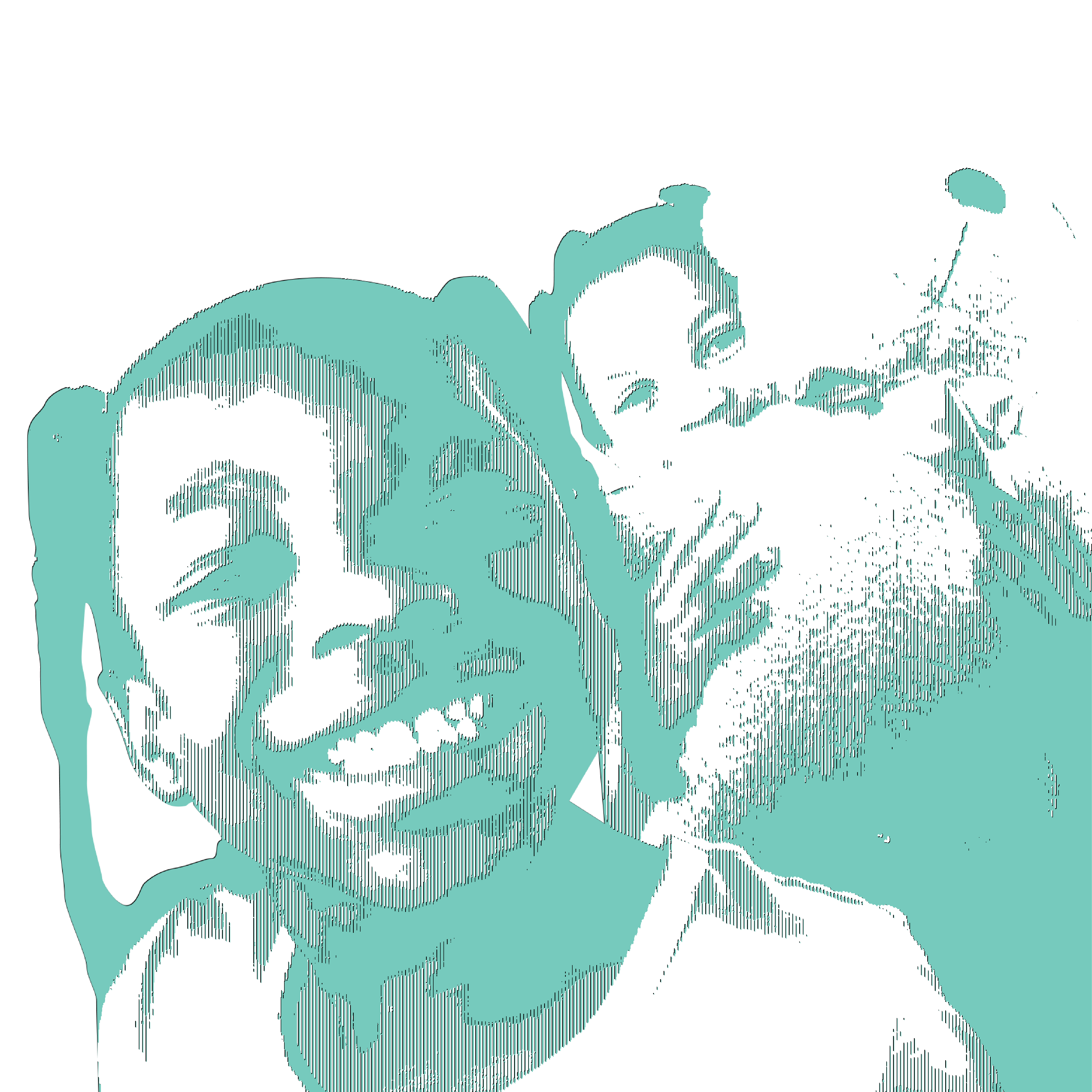This unit was created by Kelly Fischer, a high school civics, communications, and special education teacher at Vaughn Occupational High School in Chicago, IL, as part of the Spring 2021 Pulitzer Center Teacher Fellowship program on Journalism and Justice. It is designed for facilitation across approximately nine 60-minute class periods.
For more units created by Pulitzer Center Teacher Fellows in this cohort, click here.
Unit Objectives
- Students will develop skills as photojournalists, using images to tell their story.
- Students will learn how to create meaningful interview questions.
- Students will be able to identify assets and challenges in their community.
- Students will be able to advocate for change by working with leaders to change policy.
- Students will be able to demonstrate empathy and work as an ally within their community and/or within other marginalized communities to effect change.
Unit Overview
How can youth leverage their power to enact policy change? What motivates leaders to work towards a more equitable society?
When we hear stories about people facing adversity; when we truly understand who they are and the obstacles they face; we are motivated, by empathy, to stand with them on their journey towards justice. This is the vision of “Thank You in Advance.” It is bringing a personal connection to the battle for equity, putting a face, a story, and the power of dreams realized at the forefront of policy change. It is putting students at the center of their underreported story.
In this unit of study, students will work with lawmakers or changemakers who are working towards a more equitable future through policy change and become their allies in the struggle. Students will work with leaders to enact change by creating photojournalism projects which illustrate how passing legislation will help them reach their dreams. They will be thanking them in advance for supporting a bill that will improve their lives and their communities. During this unit, students will develop an understanding of underreported stories and learn how to tell their story through the lens of photojournalism. They will sharpen their communication skills by learning effective interview techniques and speaking to changemakers. Students will foster a deeper understanding of the legislative process. They will examine assets and challenges in their communities and create a powerful, empathic educational community.
Teacher’s note: Prior to this unit, you will need to identify a leader, preferably one who is sponsoring a bill to address a challenge that impacts your students, or someone working closely with an elected leader who is doing so. You will want to reach out to them to ask if they will meet with your students and work with them to help them pass the bill. Our class is working with our local state representative, Lindsey LaPointe. Meeting her via our Google Meet was empowering and engaging because she is invested in the legislation she is passing.
Performance Task
The culminating project for this unit will be a collaborative photojournalism story which illustrates how a chosen policy change will improve their lives. Students will reflect their own experience and the insight they gain from studying an issue. They will consider the proposed bill or amendment, the proponents, opponents, and their ally when designing and editing this project.
Unit Plan
Follow this nine-day unit plan including warm-ups, activities, daily nearpod slides, and discussion questions.
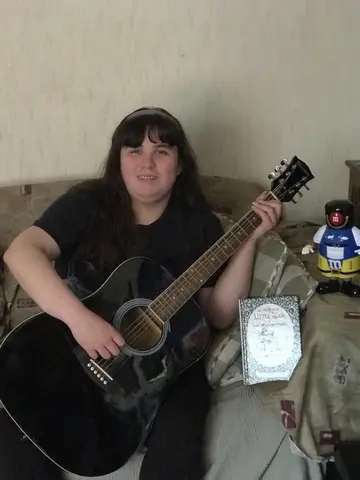
Performance Task
The culminating project for this unit will be a collaborative photojournalism story which illustrates how a chosen policy change will improve their lives. Students will reflect their own experience and the insight they gain from studying an issue. They will consider the proposed bill or amendment, the proponents, opponents, and their ally when designing and editing this project.
The final project will be given to the changemaker they interviewed to strengthen their case for passing the legislation. Our students spoke with Representative Lindsey LaPoint regarding HB3950, a bill that would provide individuals with learning differences access to post-secondary programs free of cost. Students will create photojournalism pieces which illustrate how the passing of this legislation, and per Rep. LaPointe’s suggestion, how subsequent approval of state funding, will ensure they achieve their goals. Photos will illustrate answers to the following questions:
- Who am I?
- What do I need to reach my dreams?
- What will it look like when I achieve my goals?
These photos will be accompanied by personal letters, composed with a template modified to meet learners’ individual needs.
Assessment
This Photojournalism Project Guide outlines the performance task and provides a rubric for students. The project guide is viewable as a link in Nearpod, an interactive lesson platform.
Below you will find pdf’s with all of Ms. Fischer’s student work including screenshots of collaborative classroom boards, photographs taken during a class visit from a local government representative, student letter examples, and student photojournalism campaign examples.
Illinois Learning Standards for Social Science
SS.IS.3.9-12: Develop new supporting and essential questions through investigation, collaboration, and using diverse sources.
SS.IS.4.9-12: Gather and evaluate information from multiple sources while considering the origin, credibility, point of view, authority, structure, context, and corroborative value of the sources.
SS.IS.8.9-12. Use interdisciplinary lenses to analyze the causes and effects of and identify solutions to local, regional, or global concerns.
SS.IS.9.9-12. Use deliberative processes and apply democratic strategies and procedures to address local, regional or global concerns and take action in or out of school.
WHST.11-12.4. Produce clear and coherent writing in which the development, organization, and style are appropriate to task, purpose, and audience.
WHST.11-12.7. Conduct short as well as more sustained research projects to answer a question (including a self-generated question) or solve a problem; narrow or broaden the inquiry when appropriate; synthesize multiple sources on the subject, demonstrating understanding of the subject under investigation.
WHST.11-12.9. Draw evidence from informational texts to support analysis, reflection, and research.
SL.11-12.6. Adapt speech to a variety of contexts and tasks, demonstrating a command of formal English when indicated or appropriate.
Common Core
CCSS.ELA-LITERACY.SL.11-12.1: Initiate and participate effectively in a range of collaborative discus- sions (one-on-one, in groups, and teacher-led) with diverse partners on grades 11-12 topics, texts, and issues, building on others’ ideas and expressing their own clearly and persuasively.
